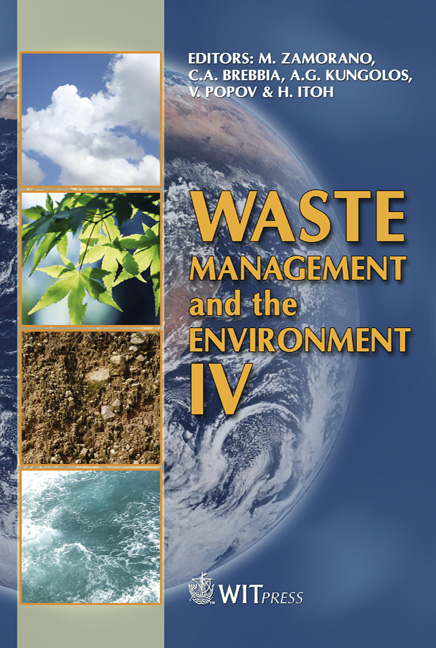Squeezing Wastes In A Wastewater Treatment Plant
Price
Free (open access)
Transaction
Volume
109
Pages
8
Page Range
97 - 104
Published
2008
Size
353 kb
Paper DOI
10.2495/WM080111
Copyright
WIT Press
Author(s)
I. M. Buendía, F. J. Fernández, J. Villaseñor & L. Rodríguez
Abstract
In this study, the performance of an anaerobic digester placed in a conventional wastewater treatment plant was evaluated. For that purpose, two different kinds of sludges were studied: a mixture of primary and secondary sludge, i.e. waste sludge, and the sludge after being anaerobically degraded, i.e., stabilized sludge. The practical biogas potential of the two wastes was studied in batch anaerobic reactors under mesophilic conditions and was compared with the theoretical methane potential that was expected from the analyses of different organic fractions of the two wastes. The obtained results indicated that there was approximately a 30% of biogas potential without recovering when the waste sludge was treated in the anaerobic digester. The theoretical and practical methane potential of the stabilized sludge, 0.16 L CH4 g VS-1 and 0.33 L CH4 g VS-1 respectively, showed that there were still organic fractions in the stabilized sludge that could be anaerobically degraded. That means that it is possible to enhance the methane production of the anaerobic digester of a conventional wastewater treatment plant by changing some operational conditions, for instance, the hydraulic retention time. Keywords: anaerobic digestion, waste sludge, wastewater treatment plant. 1 Introduction The rapidly increase of population in recent years has resulted in the generation of a large amount of organic wastes. That makes necessary to change the methodology for treating those wastes or to improve the existing infrastructure.
Keywords
anaerobic digestion, waste sludge, wastewater treatment plant.





